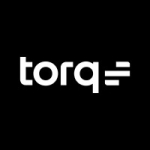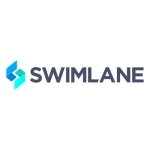What is our primary use case?
I'm using it mainly for SOC automation and reporting. It's for incident and threat modeling, incident reporting, and triage.
I come from a cybersecurity background and I used to work on the tickets for the security alerts we received from various sources, including Splunk and other SIEM tools. The major challenge was that we were occupied with a lot of noise and activities like validation of IP reports, DNS checks, and traffic monitoring. These were redundant activities that every analyst had to do. We wanted to stop these kinds of activities.
How has it helped my organization?
Splunk SOAR has multiple integrations with various tools, such as VirusTotal. Once we purchased those tools from the respective owners and automated them, the kinds of redundant activities we were having to do were almost immediately stopped.
Also, the ingestion of multiple log sources together helped us eliminate false positives. Using the SOAR platform, our monthly alert count was reduced from 1,100 to 200 or 250. That was the best impact we have seen from implementing SOAR in our environment.
It has reduced our mean time to detect and mean time to respond, from 20 to 30 minutes to just 5 to 10 minutes. In cybersecurity, every moment can be a ticking time bomb for us. We need to get to a solution immediately, whenever any incident is triggered in our environment. SOAR has helped us a lot.
Using this platform has resulted in a better work-life balance for my team.
What is most valuable?
One of the features I like most is playbook creation, and custom functions are another.
When you design a playbook, you can integrate multiple log sources and define rules. That used to be done by the analysts by going to the respective tools and doing tasks manually. Now, with playbook design, writing down those rules is a one-time activity that a SOAR admin has to do. After that, the platform automatically compiles all these activities and, based on the results, the analyst only has to indicate whether the result is a true or false positive. That reduces the time and effort involved. Our KPIs have greatly improved. An incident that used to take 15 to 20 minutes, was reduced to five minutes. This helped us speed up our response to any alert, whether it was a true positive or false positive.
Another of the best parts of the SOAR platform is its ability to integrate with other systems and applications. It provides API integrations and, through them, I can limit the rights for the tool, which is good. If I want to integrate any of the applications with CrowdStrike, but only for incident-review policies or just to review the work automation, I can grant rights only for those purposes. That is one of the best features available in SOAR. It is very easy to implement and very user-friendly.
What needs improvement?
The visibility of the solution’s playbook viewer depends on the right you assign to the analyst. SOAR has the flexibility to distinguish between the roles of analyst and owner. If the analyst's role is to just work on a ticket, they cannot view the playbook design platform. That is limited to the owner. That can be both a good and bad thing.
A major problem I have faced in SOAR's rights distribution is roles and responsibilities. Suppose I am initially granted user rights or analyst rights, but later on, I also get admin rights. SOAR is unable to amend the limitations of my role. I raised a support ticket with Splunk about this. They said it's a bug in their 5.3.5 version. To fix this, I had to reinstall the entire platform from scratch, just to amend the rights and responsibilities of one role. This bug was not fixed.
Also, the latest GUI is terrible. The previous one was better.
Another point is that while using Splunk SOAR in an investigation is not difficult, there are some complex parameters. We have SOAR case management, but the licensing is going to put a big hole in your pocket. Also, there is an issue with investigation node addition. When you are doing node additions you cannot grant the entire environment to have SOAR visibility into the incident. So when you integrate it with an ITSM tool, like ServiceNow or Jira for ticketing purposes, there is a challenge. When you do nodes for investigation on a regular basis, sometimes it does not update our ServiceNow platform, which is terrible. It is a redundant activity for an analyst to update that in the case management as well as in the ITSM tool. Although SOAR provides integration, the functionality of investigation and nodes is terrible when it comes to integration.
An additional area for improvement is custom function creation. It's terrible. A newbie cannot create custom functions right away. They would require a solid understanding first.
Also, the reporting is really awful. If I want to do a report for a customized time period, such as the last three days or the last four days, or from the 10th to the 12th of June, that is not available in SOAR at all. That kind of feature is available in Cortex XSOAR. Reporting is a real challenge.
For how long have I used the solution?
I have been using Splunk SOAR for four years.
What do I think about the stability of the solution?
It's a stable environment. I don't have any complaints about it in terms of its stability.
What do I think about the scalability of the solution?
Aside from the issue I described where I started with an analyst's role in the solution and then was granted an admin role but the privileges remained those of an analyst, and I had to reinstall the entire platform, overall, the scalability is good.
How are customer service and support?
We have contacted their tech support many times. They are readily available if I raise a P-1 ticket, because SOAR is not something we can work without. Their support is good and more capable than the SME we hired.
How would you rate customer service and support?
Which solution did I use previously and why did I switch?
Before SOAR was purchased by Splunk, it was named Phantom and that is what I have worked with most of the time. I have also worked on Demisto, which is now Palo Alto Cortex XSOAR. That was a bit more user-friendly compared to Splunk SOAR.
How was the initial setup?
The initial deployment of SOAR is very complex. In my previous company, the deployment took me almost 10 days, and that was with a Splunk SME sitting with us. We paid them money to have the SME, but even he was unable to do what we needed to be done. Later on, we raised a support ticket with them and there were multiple escalations from our upper management to the Splunk management team. They then sent a good technical guy and he fixed the issue within five minutes. Before that, we were unable to do the DR instance. It took around 10 to 15 days just to fix that.
It's very difficult to install. No newbie could install SOAR on his own. He will require support. Here, I'm specifically talking about the later versions, not Phantom, rather once it became Splunk SOAR v5.3.5.
We had three people involved.
There is some maintenance. For example, it was using Python 2.7 and then there was the decommissioning of that version and the move to Python 3.x. That meant upgrading all the playbooks.
What's my experience with pricing, setup cost, and licensing?
It's very overpriced because it is based on the number of users. There is no bulk licensing.
What other advice do I have?
My advice would be to negotiate the cost. And if your organization is on the smaller side, with between 200 to 500 employees, you should not purchase it because it will blow up your finances. A bigger environment, with 2,000-plus employees, can go with the Splunk SOAR solution.
And if you are going with this solution, you should confirm what support they are going to provide, such as whether they are going to provide training credits or not. Sometimes they don't provide Splunk credits for training. Any newbie who is going to work on this will find it terrible to work in this environment. He will not be able to work without guidance. Other SOAR solutions, like Demisto (Cortex SOAR) are very user-friendly.
Disclosure: PeerSpot contacted the reviewer to collect the review and to validate authenticity. The reviewer was referred by the vendor, but the review is not subject to editing or approval by the vendor.






















